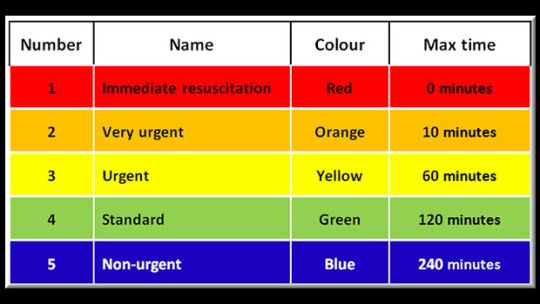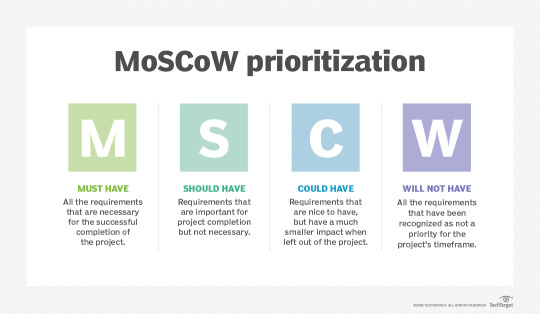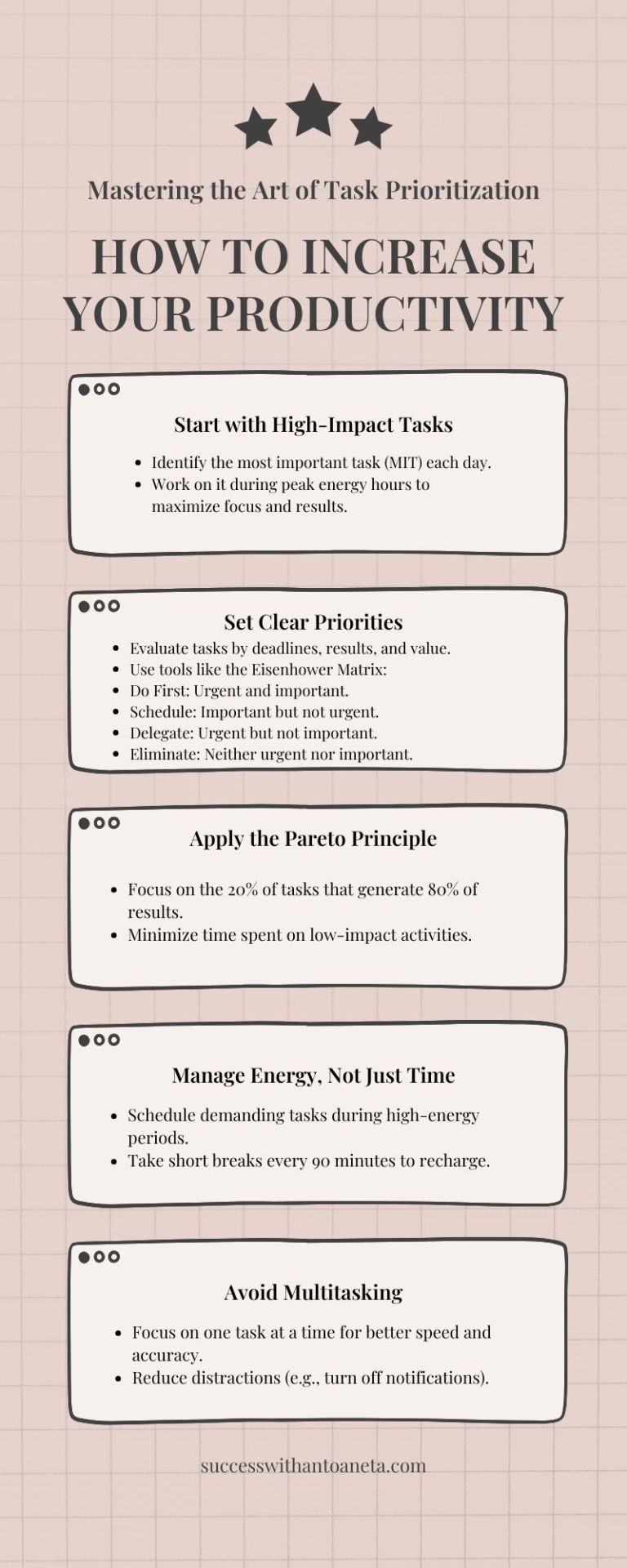#Task Prioritization
Explore tagged Tumblr posts
Note
Who prioritizes the bugs to get fixed. I know any bug that stops other people from working would be a top priority, but once those are knocked down, how do you prioritize the remaining ones?

Production makes the final call on bug prioritization, but they take the advisement of the other departments under consideration while making those choices. You are correct that the bugs that stop people from working are the top priority. Below broken builds, live issues that allow players to exploit or grief others are often top priorities. Other than that, it's a jumble of completing the remaining tasks that need to be done for our next release (especially those that allow others to work) and fixing the bugs that come in. Things that are mission critical are more important than things that are good to have, which are more important than things that are nice to have, which are more important than wishlist items. These get ranked against bugs that ruin experiences, bugs that bother players but don't ruin experiences, bugs that are annoyances but not real bothers, and so on.
[Join us on Discord] and/or [Support us on Patreon]
Got a burning question you want answered?
Short questions: Ask a Game Dev on Twitter
Long questions: Ask a Game Dev on Tumblr
Frequent Questions: The FAQ
18 notes
·
View notes
Text

#self love#self care#inspiring quotes#successmindset#feeling motivated#self ish#self motivation#self worth#prioritise yourself#task prioritization#i'll do it#work for it#do it alone#do it now#do it yourself#do it#fulfilling dreams#high achiever#achieving success#achieveyourgoals#achieving goals#achievement#it girl#inspired#inspiration#i want it#i'll get it#glowing up#clean girl#mature woman
9 notes
·
View notes
Text
We decided to use colours as fronting signalling, as well as keeping tabs on tasks
#endo safe#plural#plural stuff#plurality#actually plural#plural community#pluralgang#plural system#actually polyfrag#polyfrag system#prioritize yourself#prioritization#prioritize your mental health#task prioritization#fronting#signalling fronting
13 notes
·
View notes
Text
#sutta stories#time#management#promodo technique#pomodoro technique#technique#pomodoro taachnique#task prioritization#task management#paretoprinciple#abcdemethod#effectivegoals#focusanddiscipline#reduce stress
2 notes
·
View notes
Text
Prioritization: MoSCoW

There are many frameworks we can use to sort out our priorities, each with their pros and cons. However, I only utilize two of them as far as I remember; The MoSCoW framework and The Eisenhower framework. The later will be for my next post.
Let me share the MoSCoW for now...
Depends on the subject and the context we have on the table, there are several approaches to the framework.
For the projects I work on, I use the following approach:

Everything in the contract is an M, everything that could be a stopper of a bizpro unless there is a workaround shoud be an S, all nice to haves will be a C, and everything else must be a W. We hardly can make everybody happy in a project. But as long as it is communicated well, it shouldn't be a big problem.
To help me with a criteria checklist, I use this:

Maybe you need an approach which is simpler and applicable quickly for your personal goals/tasks prioritization? I use this:

There you go... I hope this helps.
0 notes
Text
Last time i went out, i saw a dog in a stroller and a kid using a leash
When did things changed like that?
I mean I do love animals, but let's remember the necessities of different creatures, like, a plant needs space to grow, an animal needs space to run, so why mixing them all and treat other creatures as others they arent.
Making a dog wear shoes because the road is hot and burning its feet ✅️
Drying an animal's hair because its fashion ❌️
#necessary#important#animals#protection#protest#it’s a necessity#priorities#i hope this makes sense#if that makes sense#common sense#creature#traditional values#right now#love#people#ftm puppy#dog#does this make sense#cat#plantbased#feelings#creative writing#perro#gato#gatos de tumblr#amo gatos#perros#derechos sociales#task prioritization#prioridades
1 note
·
View note
Text
Optimized Task Management for Enhanced Team Collaboration and Productivity
Task management systems streamline project workflows by enabling teams to assign, prioritize, and track tasks effectively. These platforms offer features like progress tracking, deadline reminders, and collaborative tools that ensure timely completion of projects. With clear visualizations of goals and responsibilities, task management solutions promote accountability and enhance team communication. Businesses can boost productivity, minimize delays, and achieve operational excellence by centralizing task organization.
More info: https://ahalts.com/products/hr-management

#Task Management#Project Collaboration#Task Tracking Software#Productivity Tools#Team Management#Workflow Optimization#Task Prioritization#Deadline Tracking#Project Organization
0 notes
Text

Discover how to master task prioritization and increase productivity with proven strategies. Discover how to successfully manage your time, focus on high-impact tasks, and easily reach your goals!
1 note
·
View note
Text




#productivity#productivitytips#productivityhacks#productivityhabits#planning#task prioritization#priorities
1 note
·
View note
Text
Knocking ideas off my to-do list, like purchasing and experimenting with Ranger inks. Gasp! That's not going to work. 🫣 😮💨

0 notes
Text
🇺🇸 American Candidate: Donald Trump 🐘
As president, Trump pursued a controversial ☝️ "America First” 🇺🇸 agenda. But would his 🤬 brash style and ➗ divisive policies ultimately be his undoing?
#far right#conservatism#conservatives#isolationism#protectionism#slogan#populism#sovereignty#tariffs#immigration#task prioritization#policy#american exceptionalism#divisive#polarizing#controversial#conflicting feelings#antagonistic#disruptive#provocation#alienated#incendiary#disunity#confrontation
0 notes
Text
A beginner's guide for MoSCoW prioritization

In this infographic, we will get to know about MoSCoW prioritization. The acronym MoSCoW represents four categories of initiatives: must-have, should-have, could-have, and won't-have, or will not have right now……
#MoSCoW prioritization#MoSCoW method of prioritization#MoSCoW prioritization method#MoSCoW method#task prioritization
0 notes
Text
Task Management Techniques for Project Managers: Streamlining Workflow and Meeting Deadlines
Task management lies at the core of successful project management. For project managers, efficiently handling tasks, deadlines, and resources can mean the difference between project success and failure. In this article, we'll explore various task management techniques that project managers can employ to streamline workflow, enhance productivity, and meet project deadlines effectively.
Understanding Task Management
Task management encompasses the processes, tools, and techniques used to plan, organize, assign, and track tasks within a project. It involves prioritizing tasks, allocating resources, and ensuring that deadlines are met. Effective task management is essential for keeping projects on track and achieving desired outcomes.
Challenges Faced by Project Managers
Project managers often encounter various challenges in task management, including unclear priorities, resource constraints, and communication breakdowns. Poor task management can lead to missed deadlines, budget overruns, and compromised project quality. It's crucial for project managers to address these challenges proactively to ensure project success.
Key Components of Effective Task Management
Effective task management involves several key components, including prioritization techniques, time management strategies, and communication tools. By mastering these components, project managers can streamline workflow and optimize project outcomes.
Streamlining Workflow
Streamlining workflow begins with setting clear goals and objectives for the project. Project managers should break down tasks into smaller, manageable components and assign them to the appropriate team members based on skills and availability. By dividing work effectively, project managers can ensure that tasks are completed on time and within budget.
Utilizing Technology for Task Management
Technology plays a vital role in modern task management. Project managers can leverage task management software to create, assign, and track tasks efficiently. When choosing task management tools, project managers should look for features such as task prioritization, deadline reminders, and collaboration capabilities to enhance team productivity.
Effective Time Management Strategies
Time management is critical for project success. Project managers can employ various time management strategies, such as time blocking and the Pomodoro Technique, to improve focus and productivity. Setting realistic deadlines and regularly reviewing progress are also essential for managing time effectively.
Communication and Collaboration
Communication forms the foundation of effective task management. Project managers should establish clear channels of communication and utilize project management platforms to facilitate collaboration among team members.Consistent check-ins and updates ensure everyone stays on the same page.
Tracking and Monitoring Progress
Tracking progress is essential for identifying potential bottlenecks and addressing issues promptly. Project managers can use progress tracking tools to monitor task status, identify dependencies, and allocate resources effectively. Regular check-ins with team members provide opportunities to discuss progress and address any concerns.
Delegating Tasks
Delegating tasks allows project managers to leverage the skills and expertise of team members effectively. By identifying tasks suitable for delegation and empowering team members to take ownership, project managers can distribute workload evenly and maximize efficiency.
Handling Project Delays
Despite careful planning, project delays can occur due to unforeseen circumstances or unexpected challenges. Project managers should be proactive in identifying the causes of delays and implementing corrective actions to minimize their impact on project timelines.
Managing Stakeholder Expectations
Managing stakeholder expectations is crucial for project success. Project managers should communicate project progress and potential delays transparently, setting realistic expectations and ensuring stakeholders are informed throughout the project lifecycle.
Measuring Success
Measuring success involves tracking key performance indicators (KPIs) related to task management, such as project completion rate and adherence to deadlines. Celebrating achievements and lessons learned helps reinforce positive outcomes and drive continuous improvement.
Continuous Improvement
Continuous improvement is essential for evolving task management processes and optimizing project performance. Project managers should seek feedback from team members, stakeholders, and project sponsors to identify areas for improvement and implement iterative changes.
Conclusion
Effective task management is essential for project managers tasked with streamlining workflow and meeting project deadlines. By employing prioritization techniques, time management strategies, and communication tools, project managers can optimize task management processes and drive project success. Continuous improvement and proactive problem-solving are key to overcoming challenges and delivering successful projects.
FAQs
What are some common challenges in task management for project managers? Ans: Common challenges include unclear priorities, resource constraints, and communication breakdowns.
How can project managers streamline workflow effectively? Ans: Project managers can streamline workflow by setting clear goals, breaking down tasks, and assigning them to the right team members.
What role does technology play in task management? Ans: Technology, such as task management software, helps project managers create, assign, and track tasks efficiently.
Which time management techniques work well for project managers? Ans: Time blocking, the Pomodoro Technique, and setting realistic deadlines are effective time management strategies.
How important is communication in task management? Ans: Effective communication is crucial for keeping team members aligned and informed, facilitating collaboration, and addressing challenges proactively.
#Task Management#Project Management#Time Management#Productivity#Task Tracking#Task Prioritization#Workflow Optimization#Team Collaboration#Deadline Management#Task Delegation#Task Organization#Task Efficiency#Task Automation#Task Software#Task Planning
0 notes
Text
The Matrix For All: Adapting The Time Management Matrix To Different Work Styles

Managing your time is essential. And time management is the process of organizing and planning how to divide your time between various activities to maximize efficiency and productivity. Effective time management enables individuals to accomplish more in a shorter period, reduces stress, and leads to career success. Key strategies for effective time management include setting clear goals, prioritizing tasks, and breaking large projects into manageable chunks.
Using tools like to-do lists, calendars, and time-tracking apps can help keep tasks organized and deadlines in check. It's also essential to eliminate distractions and delegate tasks when possible. Additionally, scheduling breaks and leisure time is crucial to maintain focus and avoid burnout. By mastering time management, individuals can improve their work-life balance, enhance productivity, and achieve their personal and professional goals.
So, in this article, we will get to know about the Time Management Matrix. Let’s know more about it!
What Is This Matrix?
It is introduced by Stephen Covey in "The 7 Habits of Highly Effective People," is a strategic framework for prioritizing tasks based on their urgency and importance. It categorizes tasks into four quadrants: Quadrant I includes urgent and important tasks like crises and pressing deadlines; Quadrant II consists of important but not urgent tasks such as planning, relationship building, and personal growth, which are crucial for long-term success; Quadrant III contains urgent but not important tasks, often distractions or interruptions that demand immediate attention but do not contribute significantly to long-term goals.
And Quadrant IV comprises neither urgent nor important tasks, such as trivial activities or excessive social media use, which do not enhance productivity. Effective time management involves focusing primarily on Quadrant II to proactively address important goals and reduce the occurrence of last-minute cruises in Quadrant I, while minimizing time spent on tasks in Quadrants III and IV. This approach fosters a more balanced, productive, and fulfilling work life by emphasizing long-term planning and prioritizing meaningful activities.
Employee Productivity Monitoring
Employee productivity monitoring involves tracking and assessing employees' work performance and efficiency using various tools and methods. This practice aims to identify strengths and areas for improvement to boost overall productivity. Techniques can range from software that monitors computer usage and task completion to regular performance reviews and feedback sessions.
Effective employee productivity monitoring offers several benefits. It can help managers understand workload distribution, identify bottlenecks, and ensure that resources are being used efficiently.
Additionally, it provides insights into employee performance, helping to recognize high performers and address issues with underperforming staff. However, it's crucial to balance monitoring with respect for employee privacy and autonomy. Transparent communication about the purpose and methods of monitoring can help build trust and acceptance among employees. Also you may use the employee performance tracker to know your employee’s productivity.
When implemented thoughtfully, productivity monitoring can lead to increased efficiency, better resource management, and improved employee performance. It should be part of a broader strategy that includes clear goal setting, regular feedback, and support for professional development, ensuring that monitoring contributes positively to both employee satisfaction and organizational success.
Tips For Task Prioritisation

Prioritizing tasks effectively is essential for managing your time efficiently and achieving your goals. Here are some tips for task prioritization:
Use The Eisenhower Matrix - Divide tasks into four categories: urgent and important, important but not urgent, urgent but not important, and neither urgent nor important. Focus on important tasks first. This also works for Remote Employees.
Identify Your Goals - Clearly define your short-term and long-term goals. Prioritize tasks that align with these goals and contribute significantly to your progress.
Create A To-Do List - Write down all the tasks you need to complete. Organize them by priority and check them off as you go to keep track of your progress.
Assess Deadlines And Consequences - Consider the deadlines and potential consequences of not completing a task. Tasks with imminent deadlines and significant consequences should take precedence.
Break Down Large Tasks - Divide larger tasks into smaller, manageable parts. This makes them less overwhelming and easier to prioritize and tackle. Also Watch: Leading Employee Engagement and Workforce Productivity Tool
youtube
Winding Up!
In conclusion, the Time Management Matrix is an invaluable tool for prioritizing tasks and improving productivity. By categorizing tasks based on their urgency and importance, individuals can focus on what truly matters, thereby enhancing efficiency and reducing stress.
Emphasizing Quadrant II activities—important but not urgent tasks—helps in proactive planning and long-term goal achievement, minimizing the frequency of crises and urgent tasks in Quadrant I. Meanwhile, limiting time spent on less significant tasks in Quadrants III and IV ensures that energy and resources are directed towards meaningful activities. Mastering the Time Management Matrix enables individuals to achieve a more balanced and productive life, ultimately leading to greater personal and professional success.
#Time Management Matrix#time management#employee productivity monitoring#task prioritization#time tracking tools#Youtube
0 notes